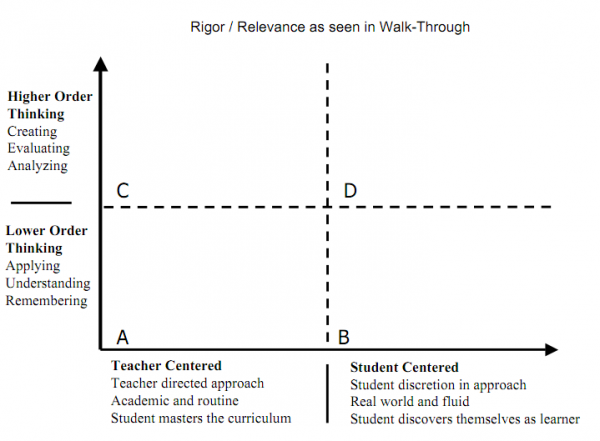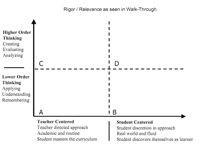
Rigor and Relevance Walkthrough
I recently conducted walk through training (WT) at Hood River County School District in Oregon. I thought the model we used was very effective at engaging teachers and administrators in reflective discussion on instructional practice.
In February, I did half-day presentations on Rigor, Relevance and Literacy to Hood River’s K-5 and 6-12 faculties. In April, I led teams on WTs to give them on opportunity to hone their observational skills. It’s one thing to talk about rigor and relevance in a workshop. It’s another to go into a classroom and try to decide the level of Bloom’s taxonomy being used by the students.
Observers were not in classrooms to evaluate teachers or instructional strategies, but to test their observational skills and have an opportunity to dialogue about their conclusions. We used this simple form to guide our efforts and keep our focus on observation, reflection and discussion. R-R-guide2.pdf 16kb pdf
One day was devoted to K-12 administrative and TOSAs. The next two days were spent with K-12 teacher teams. Each day we began with an orientation session. The team started doing WT’s at an elementary building, then moved to middle and finally, high school. We only visited teachers who had volunteered to host our team. At each building we met periodically to process what we had seen.
The most powerful element of the day, was the K-12 settings of the WTs and the use of K-12 teacher teams. Teachers seldom see other classes in action and it rare that a high school teacher would be given a chance to observe an elementary class or vice versa. All the participants agreed it was a very valuable experience and they came away with greater respect for the contributions being made all each levels of the program. Most importantly, they became more skillful at assessing the rigor and relevance of a variety of instructional strategies. They were then able to apply those perspectives to their own instructional practice. The district intends to support teachers in collegial observation and peer reflection.
For an updated guide for how to conduct classroom walkthoughs see my post: Teacher-Led Professional Development: Eleven Reasons Why You Should be Using Classroom Walk Throughs

